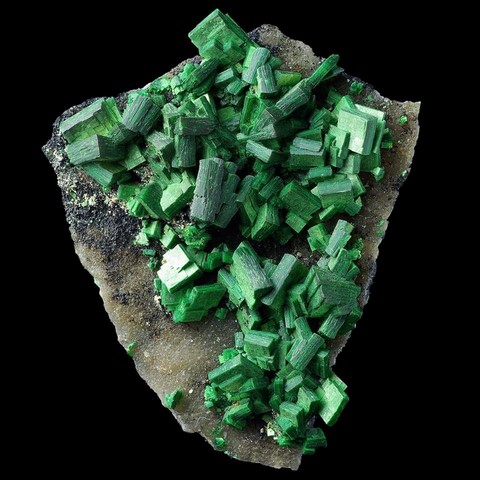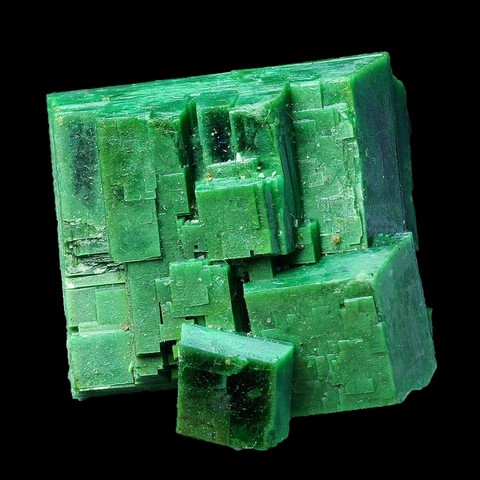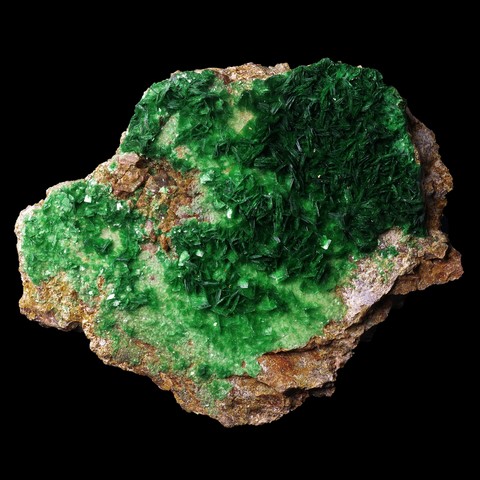TORBERNITE
Class : Phosphates, arsenates, vanadates
Subclass : Hydrated phosphates
Crystal system : Tetragonal
Chemistry : Cu(UO2)2 (PO4)2 . 10H2O
Rarity : Quite common
Torbernite is a relatively common secondary mineral in the superficial oxidation zones of uranium deposits ; it is present but much rarer in uranium pegmatites. It belongs to the group of autunite which it differs by the presence of copper instead of calcium. Copper is also the origin of its green color. This chemical difference explains that torbernite does not fluoresce under ultraviolet light, unlike many minerals in the autunite group. It owes its name to the Swedish chemist and physicist Torbern Olof Bergmann. The torbernite is in square tablets more or less thick, perfect cleavage on {001}, more rarely in tetragonal octahedra ; it can form mixed crystals with autunite. It is a beautiful emerald green to dark green, transparent when fresh ; but the torbernite dehydrates easily in the air in a less hydrated phase : the metatorbernite, a phenomenon which results in the opacification of the crystals as well as by the exfoliation of these. Torbernite is an important uranium ore and its crystals are valued by collectors of minerals.
Main photo : Metatorbernite from Margabal, Aveyron, France
Torbernite in the World
Torbernite in France
France possesses world-quality specimens thanks to the magnificent emerald green crystals exceeding 2 cm of arete grouped in sheaves or fans extracted from Margabal, Aveyron (main photo and photo on the right).
The Black Wood uraninite vein (Loire) also provided geodes exposing magnificent mats of several square meters composed of emerald green pluricentimetric torbernite crystals.
Twinning and special forms
Rare and unobservable in on {110}.
Fakes and scams
There are no fake records for this species, however most of the torbernite samples are treated to prevent dehydration and thus ensure good conservation. The old specimens are often varnished, varnish that does not necessarily age very well (yellowing, cracking). Modern treatments are almost invisible, and "plasticizes" the sample. We use paraloid B72 to stabilize our torbernites, it exists in ready-mixed solution to be applied directly with the brush and also in "beads" to dissolve in acetone.
Hardness : 2 to 2.5
Density : 3.22
Fracture : Irregular
Trace : Green
TP : Opaque to transparent
IR : 1.581 to 1.592
Birefringence : 0.010
Optical character : Uniaxial -
Pleochroism : Visible
Fluorescence : None
Solubility : Acids
Magnetism : None
Radioactivity : Important






